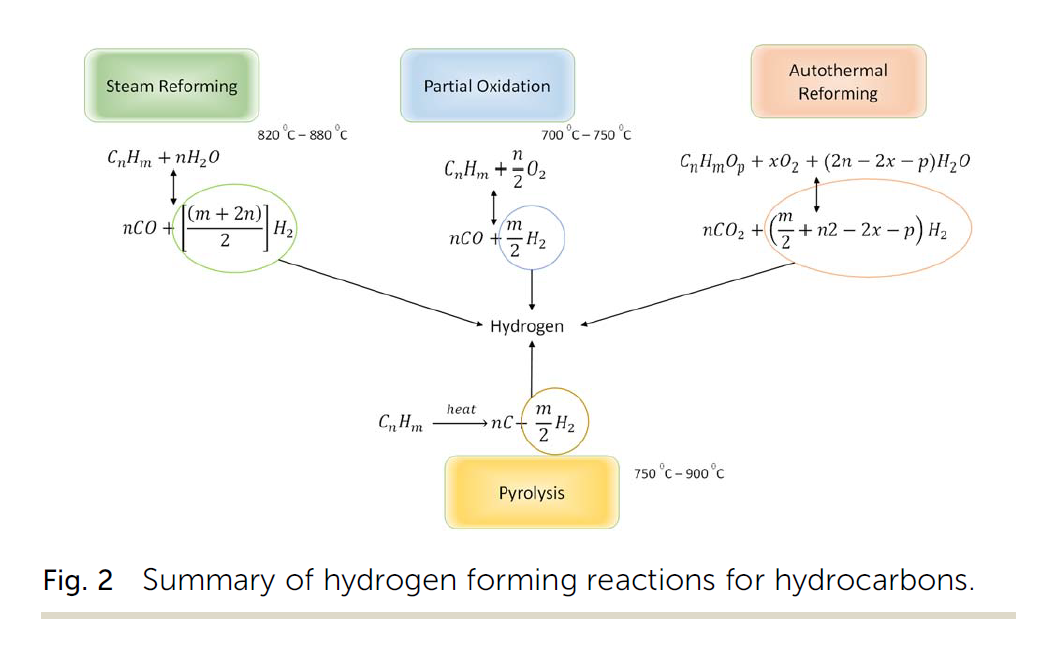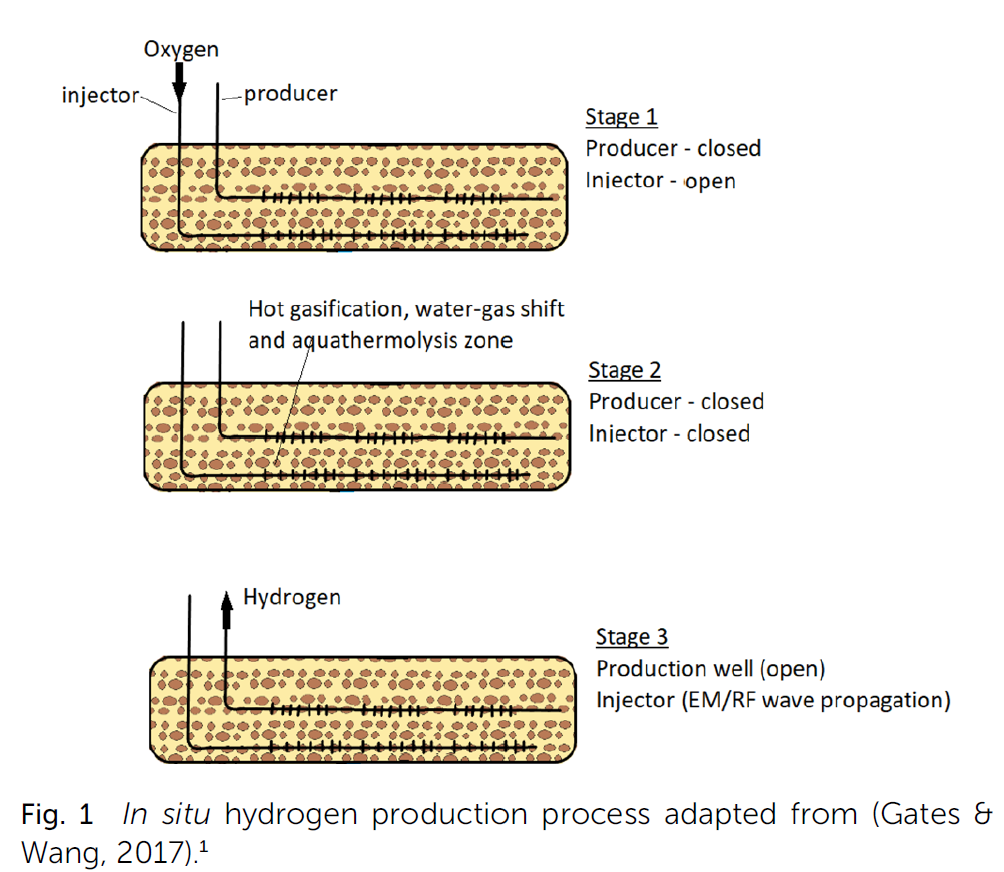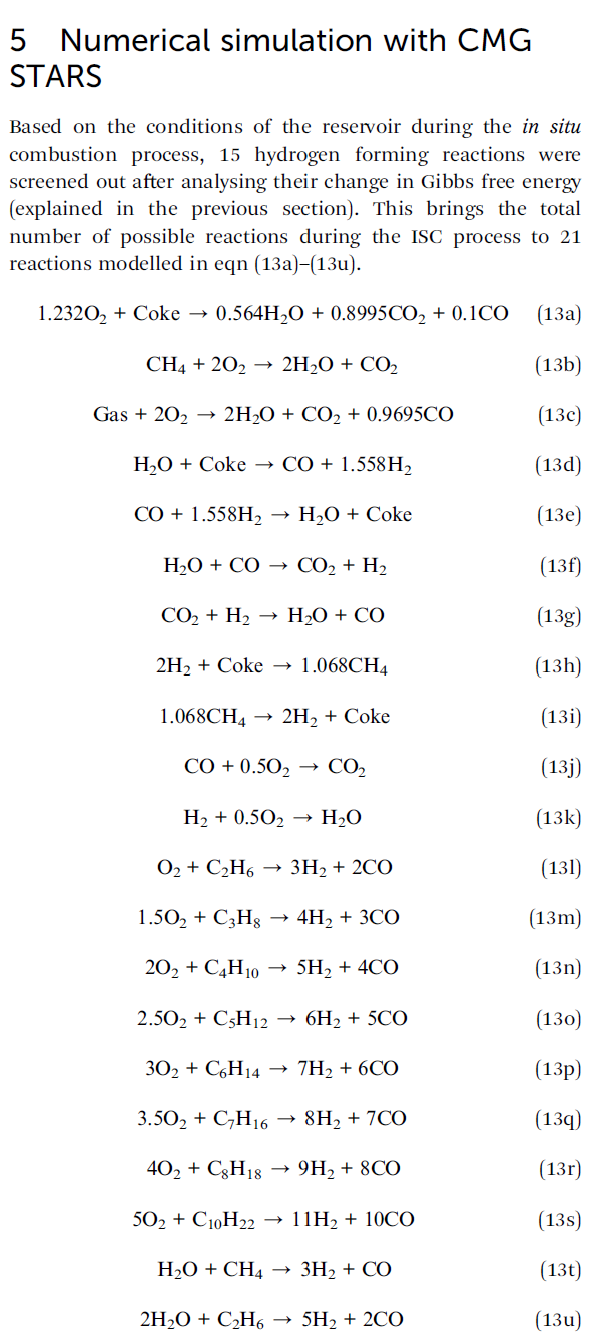与碳氢化合物相比,氢的使用正因其对环境的许多有益特性而获得声誉,如果不考虑其生产挑战的净能源需求的话。随着大多数国家采取战略实现净零排放目标,寻找可行的低碳氢气生产方式变得更加重要。卡尔加里大学的研究人员已经证明了一种从碳氢化合物储层中生产氢气,同时将相关副产物保留在储层中的创新方法。在这项研究中,开发了一个设计原位燃烧模型的框架,该模型考虑了四个关键的制氢反应——蒸汽重整、部分氧化、自热重整和热解。
使用牛顿-雅可比迭代法求解了一组从氢形成反应的化学平衡分析中获得的非线性方程。然后,使用对每个反应的吉布斯自由能变化的分析作为实现数值模型的筛选工具。将从燃烧模型获得的结果与从热储层模拟器CMG STARS获得的结果进行验证。该模型的结果揭示了蒸汽碳比与原位制氢研究的氢气产量之间呈上升趋势的正弦关系。燃烧模型可以作为设计实验分析的框架。
Abstract
The use of hydrogen is gaining reputation because of its many beneficial properties to the environment in comparison to hydrocarbon not minding its net energy requirement for production challenges. With most countries adopting a strategy to achieve their net-zero emissions targets, it becomes much more important to find affordable, low-carbon ways of producing hydrogen. An innovative method of producing hydrogen from hydrocarbon reservoirs while keeping the associated by-products in the reservoir has been demonstrated researchers from the University of Calgary. However, in this study, a framework for designing an in situ combustion model that considers four key hydrogen forming reactions – steam reforming, partial oxidation, autothermal reforming and pyrolysis, was developed.
A set of non-linear equations obtained from chemical equilibrium analysis of the hydrogen forming reactions were solved using a Newton-Jacobi interation. Analysis of the change in Gibbs free energy of each reaction were then used as a screening tool for implementing a numerical model. Results obtained from the combustion model were then validated against results obtained from thermal reservoir simulator CMG STARS. Results from the model reveal an upward trending sinusoidal relationship between steam-carbon ratio and the amount of hydrogen yield from an in situ hydrogen production study. The combustion model could be used as a framework to design experimental analysis..
查看原文
In situ hydrogen production from hydrocarbon reservoirs – modelling study
英国蒂赛德大学Teesside University






